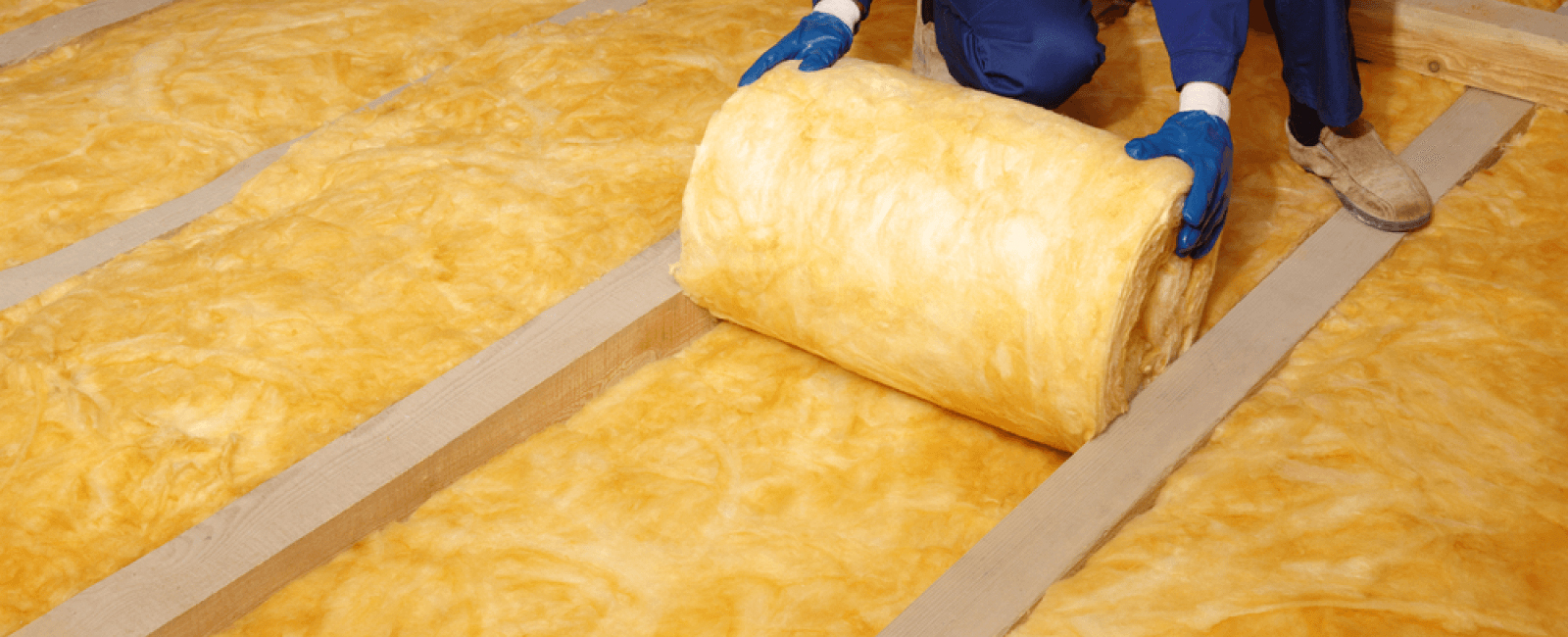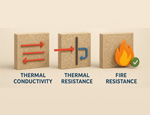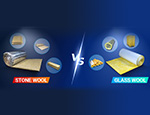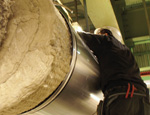- Blogs
- Glass Wool Insulation: Everything You Need To Know

Glass wool, also known as fiberglass insulation, has emerged as a versatile, efficient, bio-soluble and environmentally friendly insulation material.
It was first introduced by Saint-Gobain (ISOVER) in 1937 which further expanded across the world. Today our presence is in over 27 countries being a world leader in mineral wool insulation.
Lightweight, durable, and easy to install, glass wool offers a comprehensive solution for thermal, acoustic, and fire insulation needs. Here’s everything you need to know about this remarkable material.
What is Glass Wool?
Glass wool is made by spinning or drawing molten glass into fine fibers, creating a texture similar to wool. These fibers are bound together using a binder to form rolls, slabs, or loose-fill materials. Glass wool belongs to the broader category of "mineral wools," alongside stone wool, and is widely regarded for its excellent insulating properties.
Key Benefits of Glass Wool Insulation?
- Thermal Comfort for Buildings
A study states that for every 1oC rise in temperature above 27oC, the productivity of a typical human reduces by 3%.
With a typical thermal conductivity between 0.028 and 0.045 W/m∙K, it is highly effective in reducing energy consumption. Lower the K-value, the better the thermal performance. It is generally applied in the roofs, wall to create a temperature gradient. This helps to reduce the overall heat load coming through the building envelope. - Energy Efficiency
- For Building: Typically about 50-60% of a building’s energy consumption is through HVAC system only. The high thermal performance of glass wool based duct wrap solution/Climaver duct system ensures that the air conditioning (HVAC) system is energy efficient.
- For Industrial Process: Processes such as cryogenic application requires efficient thermal insulation at sub zero temperatures. Glass wool meets the criteria and ensures the system gets superior energy efficiency.
- Acoustic Performance
Glass wool’s porous and elastic structure absorbs sound waves, providing superior acoustic insulation for various environments. This makes it ideal for applications requiring noise control, such as offices, studios, and HVAC systems.
Our range of glass wool insulation achieves up to 1.0 NRC (Noise Reduction Coefficient).
- Fire Resistance
Glass wool insulation is non-combustible in nature (complying to the latest National Building Code), making it a fire safe product. As the product is inorganic (low calorific value), it does not propagate fire or generate toxic smoke in the event of fire in building.
- Sustainability
Glass wool is mainly made from recycled glass (up to 80%) reducing the environmental footprint.
- Ease of Installation
Available in compressed rolls and sheets, glass wool is lightweight and simple to handle, store, and install. This minimizes labor time and costs.
- Health and Safety
Our glass wool being EUCEB certified, it is Biosoluble, which implies it being completely safe for humans. WHO in their IARC volume 81 as well has declared glass wool to be safe (Group 3), grouping it in the same category as that of tea and coffee.
Applications of Glass Wool
Glass wool is incredibly versatile, finding applications across residential, commercial, and industrial sectors:
- Building Insulation: Used in façade, wall, roofs and underdeck to enhance energy efficiency and thermal comfort.
- HVAC: Common in HVAC systems for multiple applications such as ducting system, piping, and acoustics to reduce energy loss, control condensation and reduce noise.
- Acoustic Insulation: Ideal for soundproofing in theaters, studios, and residential buildings such as home theatres; also suitable for partition system in offices and institutions.
- Fireproofing: Applied in structures requiring enhanced fire safety standards for personnel safety and evacuation.
How Glass Wool Works?
The insulating properties of glass wool rely on its laminar structure of alternating gas pockets and solid fibers. These pockets trap air, a poor conductor of heat, thereby minimizing heat transfer. The absence of convection within these pockets further enhances its insulation efficiency.
For example, applying 100mm of glass wool insulation with a thermal conductivity of 0.032 W/m.K to a roof reduces temperature below up to 8oC.
Environmental Benefits
Glass wool supports sustainability goals through:
- High recycled content (up to 80%) sourced from glass cullet.
- Compressed packaging leads to less carbon emission per Kg of material during transportation.
- Reduced energy consumption during production and use.
- Zero ozone-depleting potential, ensuring a lower carbon footprint.
Additionally, our range of glass wool insulation is Greenpro, GRIHA and SGBC approved.
Conclusion
Glass wool is a powerhouse insulation material that checks all the boxes for modern building requirements—efficiency, sustainability, fire and health safety, and performance. Whether you’re designing energy-efficient homes or large-scale industrial facilities, glass wool offers unmatched versatility and benefits, making it the go-to choice for insulation needs.
By integrating innovative manufacturing techniques and leveraging recycled materials, glass wool manufacturers like Saint-Gobain are ensuring this product remains a leader in the insulation market while supporting global sustainability efforts.
For more insights into energy-efficient solutions, stay tuned to our blog!
Latest Blogs




